Example 6, Amsterdam noise policy and examples
<<< Back to examples
Introduction
Amsterdam has a great need for new houses [1]. Therefore even places exposed to high noise levels need to be considered. To ensure a minimum quality of life Amsterdam has a noise prevention policy (see appendix 1). In this noise policy the use of a quiet side is obligatory if the Dutch legal [2] upper noise limits are exceeded and required if the Dutch legal preferred limits are exceeded [3]. There are several levels for influencing the noise level at buildings:
- the building plan: building orientation and shape, noise shields;
- at an architectural level: double facade or deaf facade;
- by facilities at the dwelling: loggia’s, closed balcony’s, noise screens fitted to the building (coulisse screens), absorbing walls;
- Urban planning and traffic measures including the use of noise reducing pavement.
Only the first three levels are discussed in this section. Urban planning and traffic measures are discussed further in the noise action plans of the cities.
In the Netherlands the noise legislation forbids the building of new houses at noise levels above the mentioned Dutch upper limit (see also endnote 2). The legislation allows some exceptions of which the following two are the most important:
- the use of a “deaf facade”
- the use of a curtain wall.
In the Amsterdam noise action plan 2008-2013 (European Noise Directive) the importance of quiet areas at a walking distance is also mentioned. This also compensates for the loudness in a city.
Examples in Amsterdam of building in noise congested areas
Science park in Amsterdam (east district).
The project in Science park was realised in 2008. The location is next to the railway line Amsterdam Almere-Amersfoort. Some of the interesting (noise) aspects of this project are the use of double facades and noise screens to provide protection against railway noise. See figure 1.
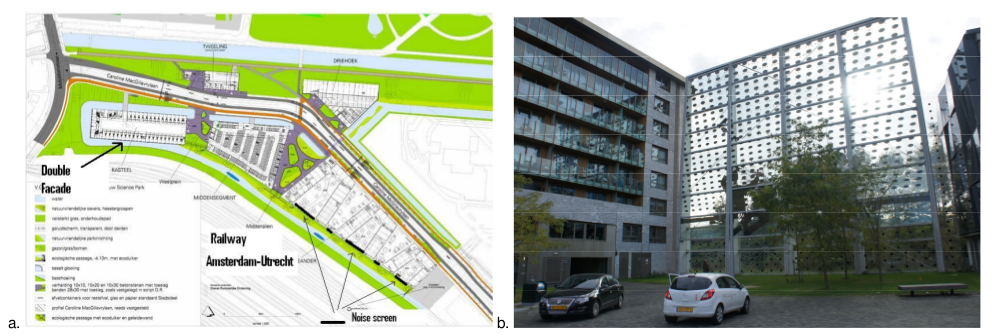
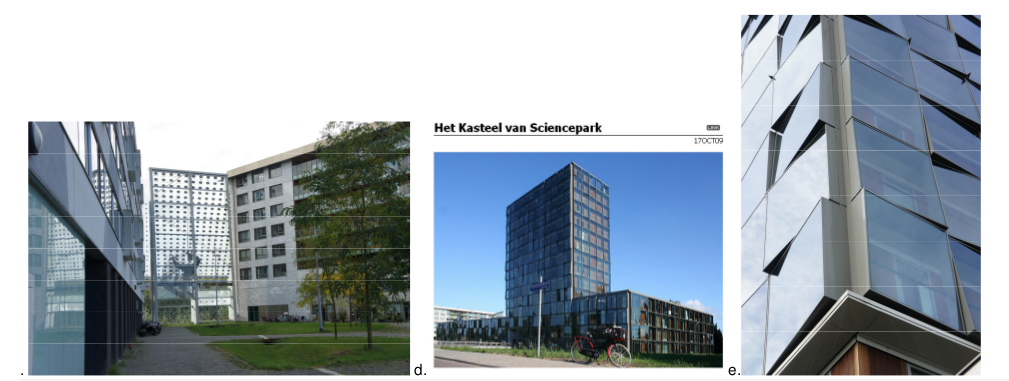
Figure 1. Science Park in Amsterdam. a. Lay out showing the use of noise shields and double facades. b and c. The noise screens against railway noise. d and e: double facades. The high building is called “The castle”.
Laan van Spartaan in Amsterdam-West
This project is located between a central railway line on the eastside, the A10 motor highway on the west side and a city road (Jan van Galenstraat) on the south side. This project has been developed recently (partly). See figure 2.
Some of the interesting (noise) aspects of this project are:
- shielding buildings parallel to the A10 highway that frees the inner part of the plan from noise. At this side the quiet sides are situated.
- partly a court yard structure:
- curtain wall for the dwellings near the A10 highway;
- a (partly) deaf facade for the dwellings closest to the A10 highway.
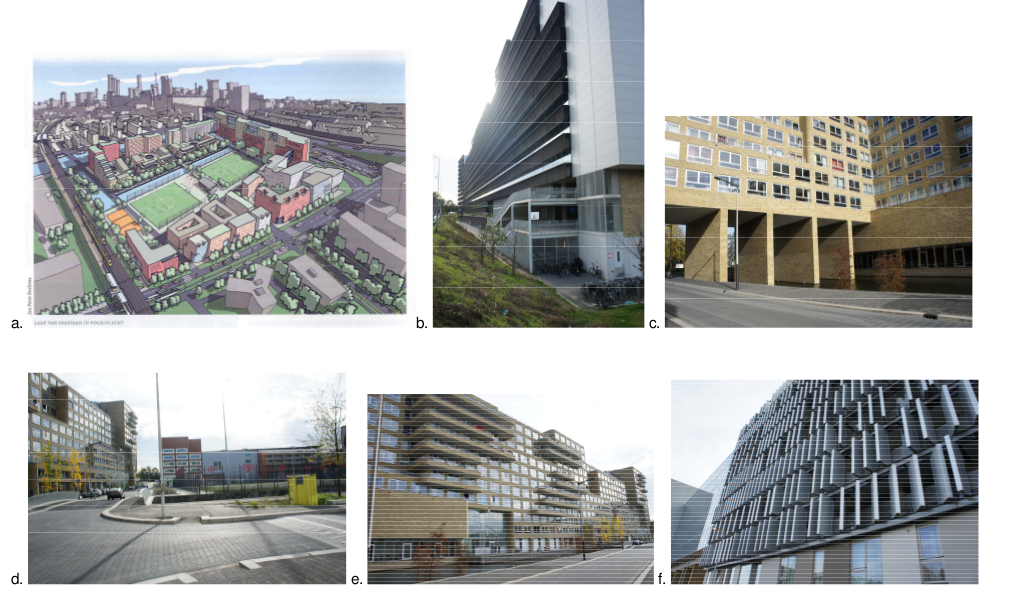
Figure 2. Laan van Spartaan: a. overview b. double facade with baffle c. entrance that shields the inner part of the project against the highway noise. d. courtyard with a football field in the front. e. The other (quiet) side of the building shown in fig. b. f: coulisse screen against car noise.
Leeuw van Vlaanderen
This is a building from the sixties that was renovated in 2005. It is situated parallel to the A10 highway in Amsterdam-West, 10 feet behind the guardrail. The use of a shielding gallery and a quiet side are some of the aspects of this project. See Figure 3.
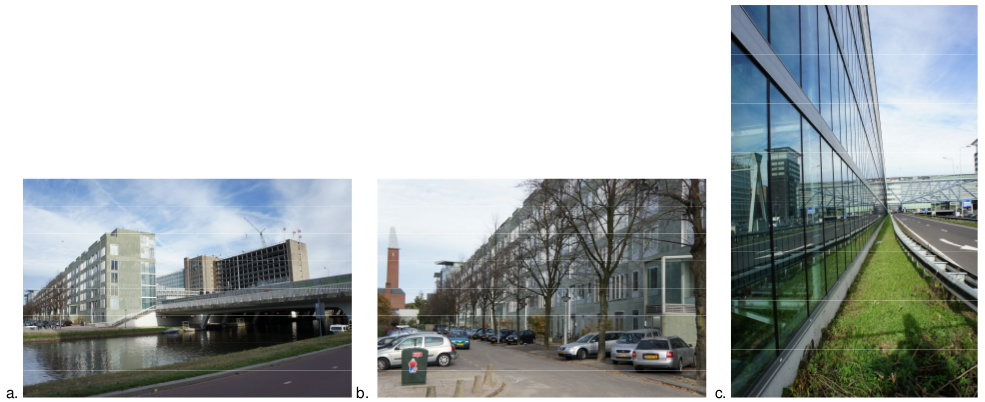
Figure 3. Leeuw van Vlaanderen, a. situation alongside the highway A10 in Amsterdam. The building on the left is the “Leeuw van Vlaanderen” building. b. the quiet backside c. the front side with a (new) double facade.
Miscellaneous
Figures 4 and 5 show two more examples of shielding of houses from road traffic noise. A quiet back side is probably very important for the inhabitants of the houses in these example

Figure 4. Examples of a noise barrier. These are situated mostly outside the cities (this one in Eindhoven near a provincial road).
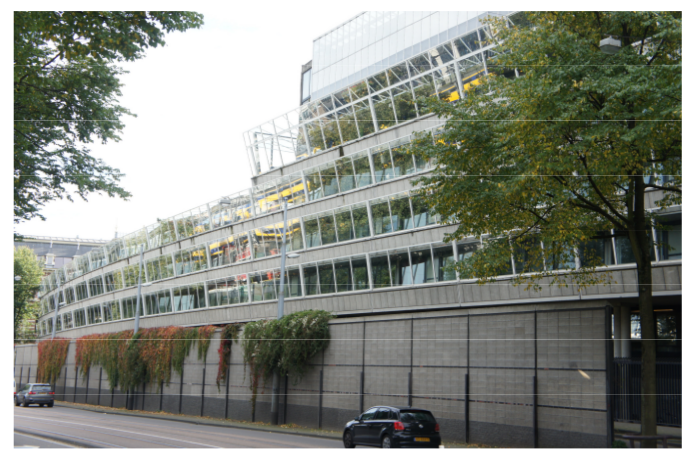
Figure 5. Combination of a noise shield and (open) curtain walls in Amsterdam at Haarlemmer Houttuinen. The shield only protects the lower dwellings.
Examples of Quiet Areas (QA)
In 2008-2009 the ‘Amsterdam quiet areas project’ was performed. Respondents were asked for their favourite quiet site in the city. This resulted in 1.280 responses. In the picture below the most mentioned places are presented. In the background the calculated noise levels are shown, due to rail and road traffic.
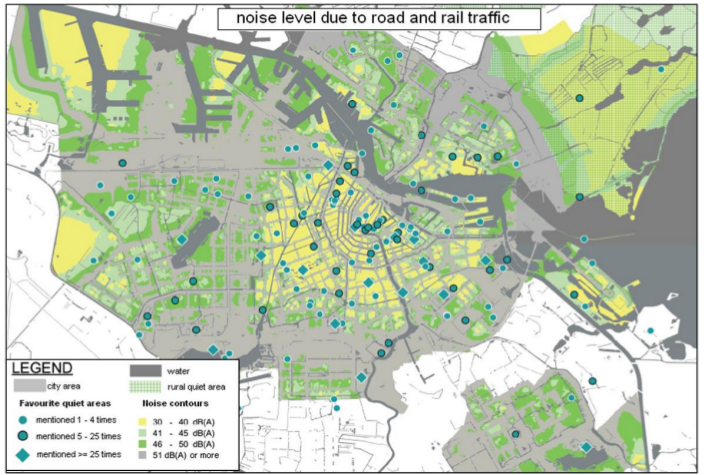
Figure 6. Quiet places in Amsterdam
It is important to preserve these quiet areas. In Amsterdam there is no policy for the preservation of quiet places yet, but there is a policy for the preservation of green areas. For more information see the publications by Frits van den Berg (literature section). Figures 7-9 show some examples of quiet areas in Amsterdam.
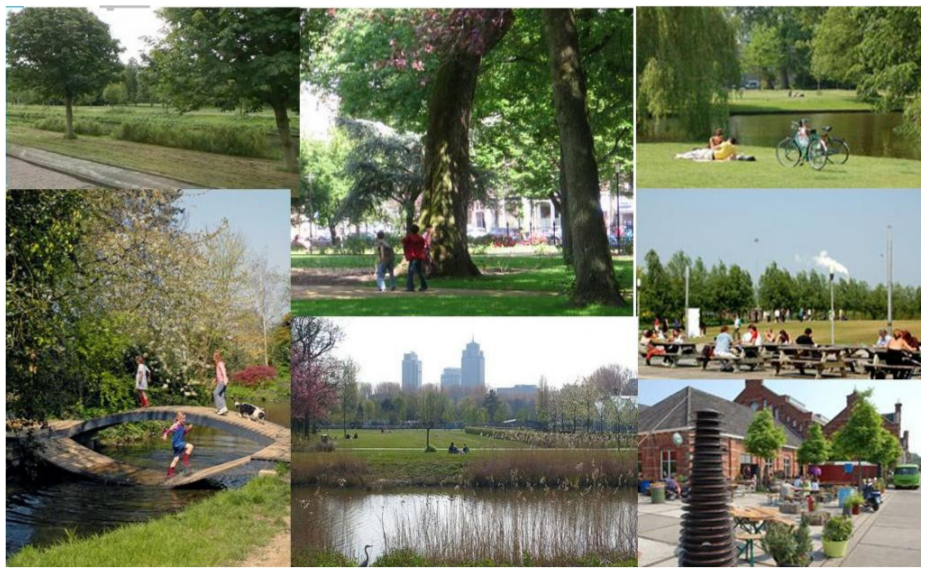
Figure 7. Parks and recreational green
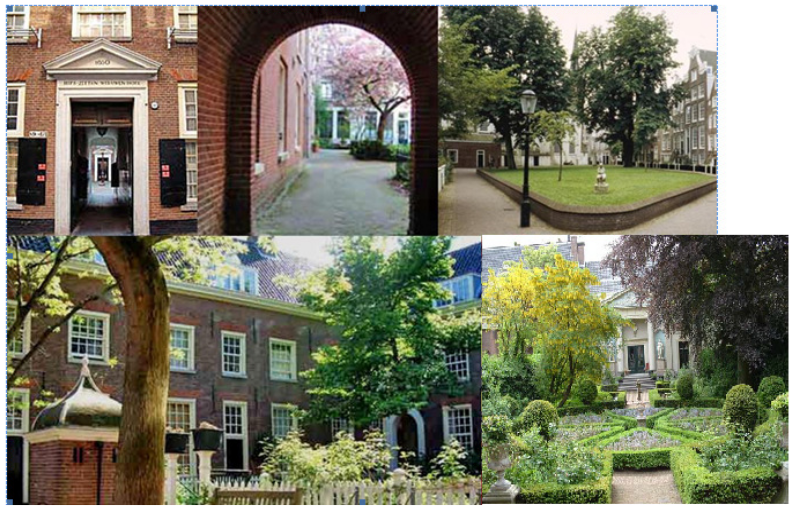
Figure 8. City oases and closed courtyards
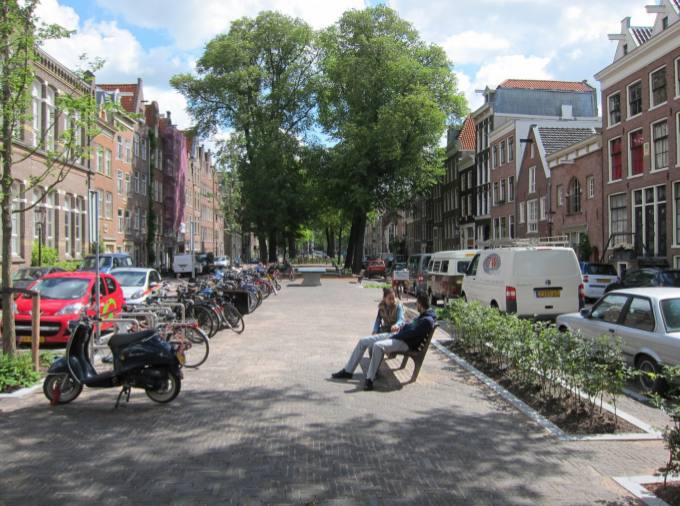
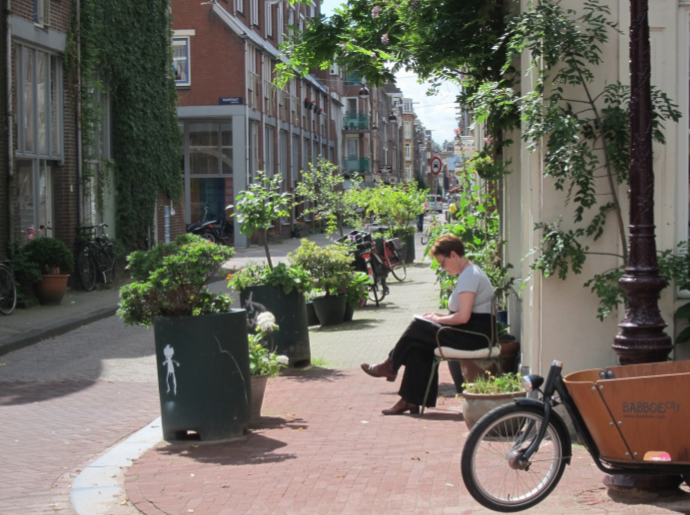
Figure 9. Quiet areas mentioned by Amsterdam inhabitants include quiet residential areas, such as the Palmgracht in the Jordaan area, illustrated by these two pictures.
Appendix 1: Amsterdam noise policy and Dutch noise limits
Since 1990 Amsterdam had a noise policy for quiet sides, where the above mentioned principles are addressed. The main focus of this policy is:
- For new houses (i.e. planned houses) with a facade noise level that exceeds the legally preferred limit (48 dB), a quiet side (Lden <48 dB) is required
- This is done by urban planning or by facilities at the houses.
- Deviations on this general rule are possible but the higher the noise exposure the heavier the motivation duty.
- For buildings with a “deaf façade” (a facade with a noise level above the mandatory upper noise limit), a quiet side is always obligatory.
Table 1. Dutch noise limits for Lden.
| Source | Prefered | Mandatory | Inside |
|---|---|---|---|
| Road traffic | 48 | 53 (63) | 33 |
| Rail traffic | 55 | 68 | 33 |
| Industrial | 50 | 55 | 35 |
Endnotes
- In the "Structure vision Amsterdam 2040" the task for the period till 2040 is 70 000 new houses.
- The Dutch legal upper noise limit is 55 dB(A) for industry, 53 dB for high ways, 63 dB for city roads and 68 dB for railways.
- The Dutch legal lower noise limit (the so called "preferred limit") is 50 dB(A) for industry, 48 dB for non urban roads and urban roads and 55 dB for railways.
Literature
- Action plan of Amsterdam (only in Dutch). Amsterdam, 2008. Link: http://www.amsterdam.nl/gemeente/organisatie-diensten/dmb/publicaties/milieu/milieubeleid/actieplan_geluid/
- Brands, A.E. en G.P. van den Berg, gemeente Amsterdam, 2009 (only in Dutch), Link: http://www.rijksoverheid.nl/documenten-en-publicaties/brochures/2009/07/01/stille-gebieden-in-de-stad.html
- Frits van den Berg, Carlo Schoonebeek and Menno Hillebregt, On the definitions of quiet façades and quiet urban areas, paper for EURONOISE 2012 10–13 June, Prague.

